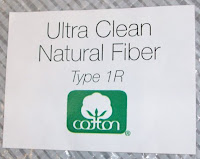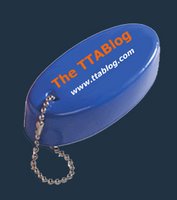In a 58-page decision, the Board granted a petition for cancellation of a registration for
ANNAPOLIS TOURS for "conducting guided tours of historic districts and other areas of cities" [TOURS disclaimed], finding the mark to be merely descriptive and lacking in acquired distinctiveness. The Board dismissed petitioner's claims of genericness and fraud, but it ruled that by showing the mark to be "highly descriptive," the petitioner overcame the presumption arising from registration under Section 2(f) and the burden shifted to respondent to "defend its registration."
Alcatraz Media, Inc. v. Chesapeake Marine Tours, Inc. dba Watermark Cruises, 107 USPQ2d 1750 (TTAB 2013) [precedential].
Evidentiary rulings: The first 24 pages of the decision deal with various evidentiary and procedural issues. Perhaps of most interest was the Board's ruling, under FRE 702, that petitioner's expert witness was not qualified to testify as to "actual consumer perception." The expert, a travel writer, did not conduct any formal surveys, but instead based her proposed opinion of "the average American consumer of travel" from casual conversations about "visiting Annapolis." However, she did not record any of the data regarding those conversations.
Genericness: The Board found that the genus of services at issue was adequately defined by respondent's recitation of services: "conducting guided tours of historic districts and other areas of cities." The relevant consumers included leisure travelers, travel agencies, tour providers, and resellers. It was petitioner's burden to show by a preponderance of the evidence that ANNAPOLIS TOURS is understood by the relevant purchasing public as primarily referring to "conducting guided tours of historic districts and other areas of cities."
Petitioner relied on dictionary definitions, newspaper and magazine articles, and third-party testimony, including that of competitors of respondent. The Board examined the evidence "up through the time of trial." But petitioner "submitted no evidence of use from a printed publication of the phrase 'Annapolis tours' per se as a generic designation for respondent's services." A few articles showed use of "Annapolis tour" to describe a tour of the city of Annapolis.
The documents together with the testimony presented "at best a mixed record of use of the phrase both generically and as part of what appears to be trademarks or trade names." [This appears to contradict the statement that there were no generic uses -
ed.]. Following
In re Merrill Lynch, Pierce, Fenner, and Smith Inc., 4 USPQ2d 1141, 1144 (Fed. Cir. 1987), the Board ruled that petitioner failed to prove genericness by a preponderance of the evidence.
Fraud: Petitioner's fraud claim was based on the allegedly false statements made in respondent's Section 2(f) declaration regarding substantially exclusive and continuous use. Petitioner asserted that the signatory took no action to verify whether respondent's predecessor had made such use of the mark, and furthermore she knew that the predecessor was not using "Annapolis Tours" as a source indicator. Petitioner also contended that the declarant was aware of third-party usage. According to petitioner, "the requisite intent to deceive the PTO can be inferred" from the declarant's "conduct in this proceeding," and that at a minimum her execution of the Section 2(f) evidenced a "reckless disregard" for the truth.
Respondent pointed to the fact that respondent sought advice of counsel before executing the declaration, but the Board observed that such seeking legal advice is not an impenetrable defense to a claim of fraud. However, it is up to the fraud claimant to establish a factual basis for the inapplicability of the advice-of-counsel defense by, for example, eliciting further testimony regarding the advice received and the extent to which the advice was taken.
M.C.I. Foods, Inc. v. Bunte, 96 USPQ2d 1544 (TTAB 2010) [precedential].
Examining the declarant's testimony (which did not trespass into the privileged area of the nature of the advice given), the Board concluded that petitioner had failed to prove fraud "'to the hilt' with clear and convincing evidence." [quoting
In re Bose Corp., 91 USPQ2d 1938, 1939 (Fed. Cir. 2009). Her testimony demonstrated that, even if her statements were false, they were not made with an intent to deceive the PTO. She testified that she "believed" that her statements regarding continuous and substantially exclusive use were true based on her observations, and that she did not merely rely on advice of counsel.
Furthermore, her testimony demonstrated that she did not act with recklessness, and therefore the Board found no need to decide whether a "reckless disregard for the truth" is sufficient to support a finding of fraud.
Mere descriptiveness: The subject registration was issued under Section 2(f) based upon a 5-year declaration of continuous and substantially exclusive use, with no actual evidence of acquired distinctiveness. The registration enjoys a presumption that the registered mark has acquired distinctiveness, and the party seeking to cancel must "produce sufficient evidence for the Board to conclude in view of the entire record ... that the party has rebutted the mark's presumption of acquired distinctiveness by a preponderance of the evidence."
See The Cold War Museum, Inc. v. Cold War Air Museum, Inc., 92 USPQ2d 1626, 1630 (Fed. Cir. 2009). According to
Cold War Museum, the ultimate burden of persuasion remains on the petitioner.
Petitioner argued that ANNAPOLIS TOURS is "highly descriptive" and therefore a heightened showing of acquired distinctiveness is required. Respondent maintained that because the Examining Attorney did not require additional evidence of acquired distinctiveness, the mark should not be considered "highly descriptive," and further that petitioner must show that the subject mark was not in continuous and substantially exclusive use in order to meet its burden to overcome the presumption.
The Board ruled against respondent, holding that "[t]he fact that respondent’s mark was registered pursuant to Section 2(f) based solely on a declaration of use does not preclude petitioner from introducing evidence that the mark is so highly descriptive as to require actual evidence of acquired distinctiveness in order to satisfy its initial burden of proof." To hold otherwise would unduly restrict a plaintiff in its proofs and would fail to take into account changes in the marketplace. "Essentially, this would amount to substituting the examining attorney’s determination, based on the limited record adduced during
ex parte examination, in lieu of a more expansive record that may be shown in an
inter partes proceeding." Once petitioner meets its initial burden, "the burden of proof shifts to respondent to defend its registration." [Shouldn't that be the burden of producing evidence, not the "burden of proof"? -
ed.].
Applying those standards, the Board found that petitioner had "amply" demonstrated that the subject mark is "highly descriptive." [By the way, where is the line to be drawn between "descriptive" and "highly descriptive"? -
ed.]. The Board's explanation of why it applied the "highly descriptive" label consisted solely of this statement: "See discussion, Genericness Claim,
supra."
Given the highly descriptive nature of the mark and the fact that the only evidence that respondent offered at the time of registration was the five year period of use we find that petitioner has satisfied its initial burden of making a prima facie showing of lack of acquired distinctiveness.
The burden therefore shifted to respondent to "now prove acquired distinctiveness based on any 'additional evidence or argument' ..., keeping in mind that petitioner bears the ultimate burden of proof by a preponderance of the evidence."
The Board found respondent's sales figures to be "quite low." Proof of media recognition was lacking. And respondent's evidence of continuous use since 1992 was "problematic," the testimony of its witnesses was "mixed," and petitioner's rebuttal testimony cast further doubt on the issue.
The Board concluded that, given the highly descriptive nature of the term ANNAPOLIS TOURS, respondent's evidence was insufficient to rebut the prima facie case of descriptiveness established by petitioner, and that petitioner met its ultimate burden of proof. The Board therefore granted the petition to cancel on the ground of mere descriptiveness.
Read comments and post your comment here.
TTABlog comment: The key ruling was obviously that the mark ANNAPOLIS TOURS is "highly descriptive," yet there is no explanation of what the test is for "high descriptiveness," and little discussion of why petitioner's insufficient evidence regarding genericness was deemed sufficient to meet the "highly descriptive" test.
Curiously, at page 5 of the decision, the Board states that petitioner "has not argued the descriptive [claim] in its brief," and so that claim was waived.
On the fraud issue, what were the statements that were false? Registrant's use of ANNAPOLIS TOURS as a mark appeared, on this record, to be continuous and substantially exclusive. If there weren't any false statements, why get into a discussion of intent?
The Board's citation of the
Neapco decision in connection with the burden of proof, is more confusing than helpful.
Neapco did not concern a Section 2(f) registration, and the quotation from
Neapco has no applicability here.
Copyright 2013 John L. Welch.



























